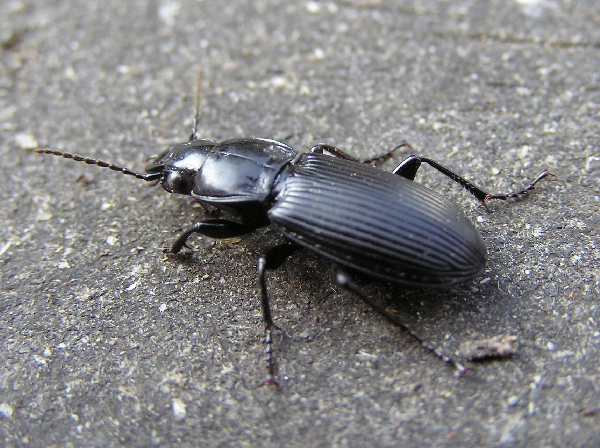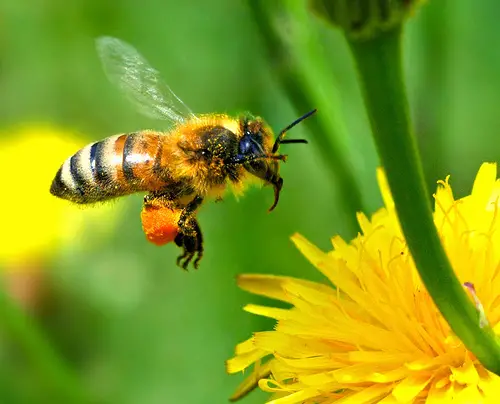Step 1 - ‘Is my soil safe?’
Before you start to tear out that grass so you can start growing
a sea of delicious fruits and vegetables, it’s important to make sure that your
soil is safe and free of contaminants. Typically, the most dangerous contaminants
folks find in city lots include lead, arsenic and asbestos. If you are at all
concerned about the safety of your soil, collect a few samples from around the
yard and send them to a soil lab to have them tested. Soil tests have the added
benefit of informing you about the character and quality of your soil as well
as any possible nutrient deficiencies. If it turns out that your soil is
contaminated with pollutants, it is still possible to establish a safe garden.
Instead, build raised beds and bring in clean topsoil or compost. A raised bed
is simply a frame or perimeter wall built out of wood, stone, cement blocks
(whatever you can think of) that retains the soil you bring in, keeping it from
spilling out. Either way, once you’ve gotten the results from your soil tests
back, you can begin to select and prepare your new garden site.
Step 2 - ‘Where should I put the garden?’
Well, it depends. First, make sure that you choose a location
that gets plenty of sunlight. Observe your yard at various times of day
throughout the growing season - take note of the areas that remain largely shade-free.
Because the sun’s path is located to our south for the majority of the year,
it’s best to start by looking at sites south of any large buildings or
obstructions. By nestling your garden up against a building or wall, it’s
possible to make use of localized ‘micro-climates’. These areas are noticeably
warmer than the surrounding environment due to their site-specific location. If
you’ve ever leaned against a brick wall that’s been soaking up the hot summer
sun, you’ve experienced a micro-climate first hand. It’s also important to
consider the relationship of your garden to your home. If you’ll be visiting
your garden daily, it makes a lot more sense to site it conveniently close to
your house. Check to see where you have access to water - will a hose easily
reach?
Step 3 - ‘Get rid of that lawn and prepare your garden’
Here we have a number of choices, some better than others
(in my humble o., we’ve saved the best, sheet mulching, for
last). Grasses are incredibly persistent, so it will take time and effort to
outcompete them. But remember, once you’ve gained control of your new garden
site, you choose which plants grow where. Because we plan to use this
grass-free space to grow food (and because it’s responsible to avoid poisoning
wildlife, children and groundwater with chemicals) we’ll be focusing on organic
grass removal strategies. Ok, so here goes:
• Solarizing - Though not the fastest or most natural
technique, covering your garden site with a layer of heavy plastic will act to
burn and suffocate the unwanted plants beneath. It will take a full year or more
before the grass has been completely killed off, but once it is done, you
should have a clean, weed free bed, ready for planting.
• Tilling - Aggressive and destructive to soil
structure, rototilling will rapidly prepare a new garden bed. It is a very
effective way to mechanically incorporate minerals and fertility into depleted
soils. Note: certain weedy grass varieties will resprout from root fragments
created by tillage, potentially causing a persistent weed problem.
• Sod Removal - Though typically very energy
intensive, the physical removal of sod from your yard produces immediate
results, ready for garden establishment. There are two primary ways you can do this
- by hand using a hoe or spade, or by machine with a sod cutter. If you are
only converting a small area, it is likely to be more cost-effective to work manually.
Use a garden spade or shovel to cut squares of sod, then skim them from the
soil’s surface, exposing bare soil. This is very hard work but once again
yields quick results. Take care not to remove too much soil as it is the soil’s
upper layers where most of the nutrients and fertility are found. If you have a
larger area to work, it may make sense to rent a sod cutter. This is a
walk-behind machine that enables the user to set the depth of cut and will quickly
and noisily skim beneath grass roots, severing the sod from the soil below.
They typically cost around $50 per day from a machine rental outlet, though
without access to a pickup truck it will be difficult to transport it home.
After traversing your new garden with the sod cutter, follow behind, rolling up
the layers of sod. You can save it to plant in an area where you’d like grass
(heaven forbid) or mound it up in a pile, grass side down and allow it to
compost for a year or two, after which you’ll be left with rich crumbly topsoil
you can use to topdress your garden. This brings us to our final, and in my
mind, best, grass removal strategy.
• Sheet mulching. Sometimes referred to as ‘lasagna gardening’,
sheet mulching is a garden establishment technique where the gardener lays down
multiple layers of organic materials (usually 1’+ thick), choking out the
unwanted grass and composting it in place. It also works to feed and cultivate healthy
soil life, improve soil structure, reduce weed regrowth and maintain a cool,
moist soil bed. Sheet mulching is less physically demanding than sod removal,
and acts to build up soil over time in contrast to tillage which provides a
rapid, short-lived burst of fertility to plants. It should be noted though that
sheet mulching requires large quantities of organic matter (to mulch 50 ft2 one
foot deep, requires 2 cubic yards of mulch, or about a pickup truck full).
The ideal time to begin sheet mulching for springplanting is
the previous fall so that the mulch has a chance to begin breaking down,
killing the grass below and feeding the life in the soil. There is no ‘right’ sheet
mulch recipe. Rather think of it as more of an concept. Generally, there are
four distinct layers used in sheet mulch. Use whatever materials you have
access to - be creative and see what’s abundant and free. To begin, mow the
existing grass as low as possible. Then thoroughly wet the area with a garden
hose or wait for a rain. If the soil is already damp, skip this step. If you
plan to plant any large trees or shrubs, do so before you begin mulching as it
is much easier to mulch around them.
• Layer 1 consists of ‘Concentrated Compost’. Up to
6” thick, this layer is made up of material that is high in nitrogen and
potentially contaminated with weed seeds. This nitrogen boost works to
stimulate soil life and jump-start the decomposition process. Manure, yard
waste, food scraps all work well. If working with heavy clay soils, use a
pitchfork or Ubar to break up and aerate them. This is also the time to add any
necessary amendments (dolomite, lime for acid soils, gypsum for heavy clays,
etc).
• Layer 2 is the ‘Weed Barrier’. 4 to 6 sheets of newspaper
(non-glossy), a layer of cardboard, burlap bags, etc. all work well. Overlap
sections along seams by at least 6” to prevent weeds from penetrating. Thoroughly
wet it down to speed up decomposition and prevent it from being blown away.
• Layer 3 is the ‘Compost Layer’. Generally 3-5” thick,
use fully-decomposed compost, straw, grass, leaves or any other weed-free
organic material.
• Layer 4 is the final ‘Top Layer’. Again use a high carbon,
weed-free material such as straw, leaves, wood chips, bark or sawdust. This
layer will need to be repeatedly renewed as it decomposes. And finally, you’re
mulched and ready to garden! Because sheet mulch acts to develop rich, living
topsoil, avoid walking on your garden beds - instead create pathways that
provide comfortable access. When it comes time to plant into your mulch, create
a small hollow, fill it with topsoil and plant your seed or seedling directly
into it. If you wish to sow seeds, add a thin layer of compost to the mulch’s
surface and broadcast seeds onto it. Finally, take care to keep the mulch away
from the base of plant stems as mold, slugs and rodents can cause considerable
damage to plants and young trees.
Happy gardening!!






